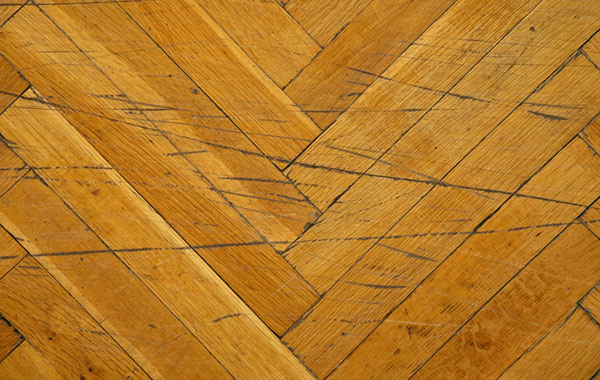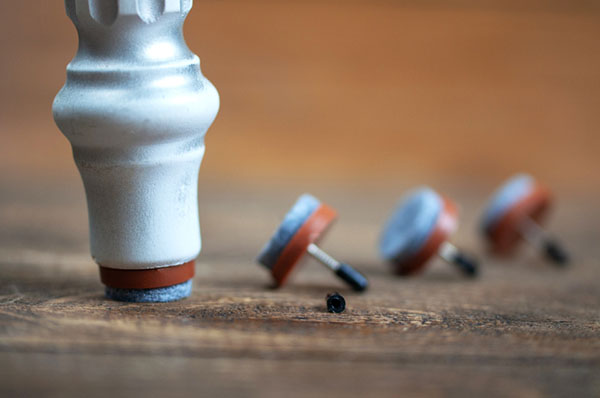How to Keep Furniture From Scratching Hardwood Floors: A Helpful Guide

Genuine hardwood makes a gorgeous and timeless flooring option for our homes. Unfortunately, due to its natural beauty and qualities, hardwood flooring can also be easily scuffed and scratched if you’re not careful. However, while you can take preventative measures by removing shoes at the mudroom door, the major culprit is actually the heavy furniture pieces that consume the space.
Luckily, you can still design your home with the furniture you want, without worrying about your lovely hardwood flooring. Here are some easy tricks and considerations on how to keep furniture from scratching hardwood floors.
1. Avoid Pushing and Dragging Furniture

The reason why furniture is the biggest culprit of our hardwood floor scratches is due to the weight. Furthermore, scratches and gouges are a direct result of pushing and dragging furniture.
Many furniture pieces are quite heavy and require extra hands to move. Oftentimes, homeowners attempt to move the furniture themselves, refusing to ask for extra help. However, this is when scratches occur!
If the piece is light or small enough, lift it from the hardwood flooring instead. If it’s something heavier and larger, always ask a neighbor or friend for assistance. You might be eager to rearrange your furniture, but a little help can prevent scratching hardwood floors and keep them protected.
2. Roll Out the Area Rugs
One of the easiest ways to keep furniture from scratching hardwood floors is to offer a barrier. And what better barrier than an attractive, soft area rug? Not only does it protect against gouges, but it adds a warm underfooting and extra style and color to the space. It can even ground and tie together a large and spacious seating area.
Add even more padding with a rug pad beneath your rugs. Just be certain the rug pad backing is safe to use on hardwood. Otherwise, you might find a yellowing discoloration or the pad itself might cause fine hairline scratches.
3. Use Furniture Pads

Sometimes, an area rug is unnecessary or makes it challenging to maneuver. For instance, an area rug beneath a dining table is a great idea, but certain dining chair feet catch and make it difficult to slide to or from the table. Instead, when you need some movement, you could forgo the area rug and attach furniture pads to the feet or corners.
Furniture pads and gliders can not only cushion corners and feet of furniture pieces, but can elevate them off the floor.
Felt pads perform exceptionally well when you need to shift and slide around furniture without an extra pair of arms. This could be whenever you rearrange a room or clear the area to install new flooring. However, if you do have an area rug and need to transition furniture through bare wood floors, you can create quick furniture pads with scraps, blankets or clothing, too.
4. Check Furniture Feet Before Placement
It’s wise to check your furniture’s feet every so often to ensure they are not too worn or rough. If you find the feet are indeed coarse, give them a gentle sanding with fine-grit sandpaper or a palm tool to keep the furniture from scratching your hardwood.
5. Find Furniture with Wheels
If the situation calls for it, find furniture with built-in wheels. With a wheel fastened to each corner, you can easily glide the furniture piece whenever you need to transition it to another room or redecorate.
This type of furniture could be anything from large media and entertainment centers to small bar carts that scoot from the dining room to the living area for after-dinner cocktails and nightcaps. Some seating pieces also come fastened with rolling feet, as do office chairs or appliances.
Wheels are an extremely useful attachment to have on furniture, but the wrong wheel material, such as the nylon hard-plastic wheels of the standard office chair, can damage your hardwood flooring. To ensure your wheels prevent and not cause scratches, seek out non-marking rubber wheels or ball wheels. Check the wheels and clean them regularly to prevent scratches, too.
Prevent Scratching Hardwood Floors and More!
Many of these tricks can keep furniture from scratching hardwood floors but also other flooring types as well! Resilient flooring, such as laminate and vinyl, can still scratch and dent. So do yourself a favor as a homeowner and protect any type of flooring you have with rugs, furniture pads or any number of the above methods. It’s guaranteed to keep your floors looking beautiful and scratch-free for many years. In order to properly care for your hardwood floors, Twenty and Oak recommends reviewing the care and maintenance documents for your flooring type. Each product on our website lists the specific maintenance documents you’ll need to help make your floors last.
Looking for the perfect floor? Check out Twenty and Oak’s Floor Genius quiz and take a look at our virtual showroom to explore numerous styles and finishes.
Browse Our Selection of Hardwood Floors